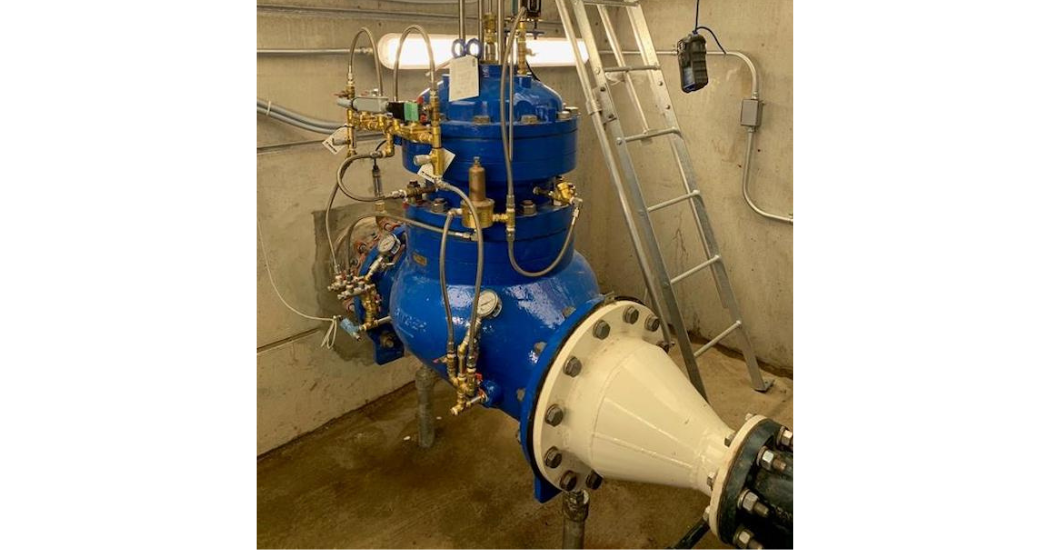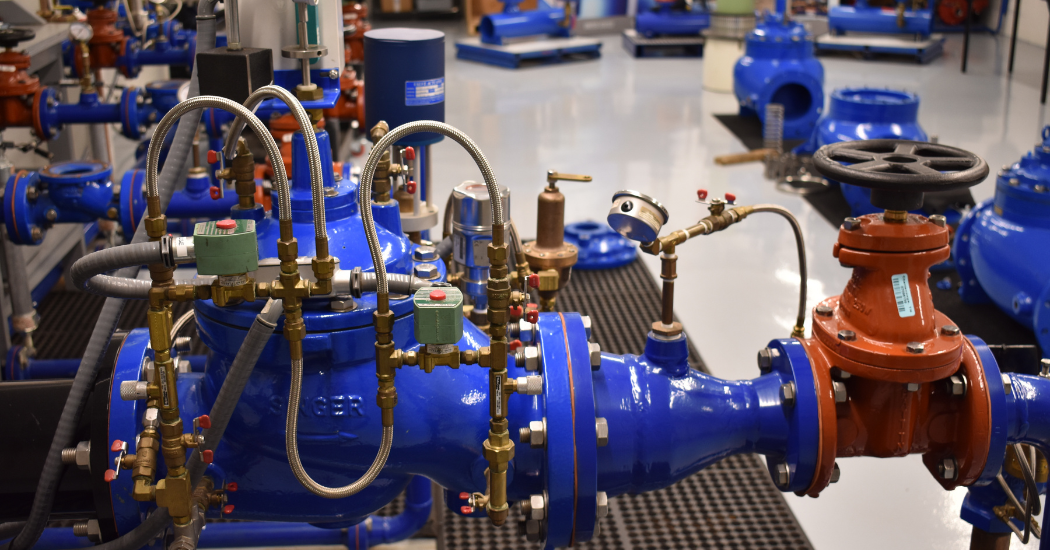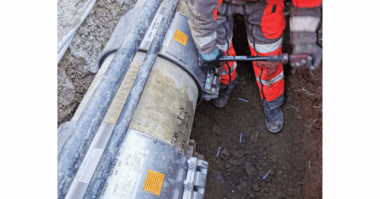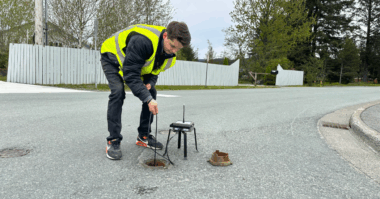Automatic control valves are often viewed as simple pieces of equipment. They open, close, or modulate to control water pressure, flow, level, or pumps. Automatic control valves are found all over the world in varying areas such as irrigation, fire protection, aviation, building trades, and waterworks distribution systems to name a few. We install them in unseen or inconspicuous locations underground, on rooftops, inside buildings, and in remote locations. As control valves are often unseen or in remote locations, how do crews know when something is wrong before it causes a bigger problem? What can they do to prevent or reduce the risk?
The answers lie in the capabilities of the control valve. Many control valves are located in areas where access to power is unavailable. In these locations, hydraulic pilots are utilized to control valves based on flow, pressure, or level sensed by the pilot system. The operators responsible for these valves should look into creating and/or utilizing a preventative maintenance and valve exercising program. This ensures the correct operation of the valve and that the valves are able to perform as required when hydraulically called into service. If there is access to power, then electronically actuated controls utilizing solenoids, motor operators, and panels will help integrate the control valve to a SCADA system and enhance the monitoring and control of the system or zone it controls.
When choosing a control valve for a specific application, consider conditions that will exist where control valves do not perform well and should be avoided when possible. Control valves need at least 10 psi of differential pressure to work effectively in most cases. If you do not have this amount of differential in the application, it is recommended to partner with a control valve manufacturer to help provide a solution. Issues like cavitation will occur whenever there is a pressure drop of greater than 65% through the valve. This condition is unavoidable at times and can be mitigated by utilizing orifice plates or anti-cavitation trim to provide additional pressure drop areas before the water flows downstream of the valve. Anti-cavitation trim should be an engineered product created for the application to ensure the destructive nature of cavitation is controlled.
 There are many operational issues one faces when dealing with a control valve. This Q and A is to help answer some of the common questions we receive in the training and applications department at Mueller Water Products.
There are many operational issues one faces when dealing with a control valve. This Q and A is to help answer some of the common questions we receive in the training and applications department at Mueller Water Products.
Q: What are the locations and functions of each control valve in the system?
A: If you are responsible for a system with multiple automatic control valves, we recommend utilizing a spreadsheet or database to enter the important data about the valve. Enter the manufacturer, model, serial number and any other pertinent information available. Take a picture of the valve when it is installed when possible. Then, use a map to show the location of the valve with a corresponding number that can be cross-referenced with the spreadsheet or database. Make a reference sheet of customer service numbers for manufacturers responsible for items within your system and who is responsible for service and supply for those valves. The database can be used to keep track of valve servicing and additional parts that may be added to the valve and changes made to its operating conditions.
Q: What are the most important maintenance tasks for valve operators to perform and how can we streamline tasks?
A: As mentioned earlier, there are many valves that perform control tasks for different applications in different areas. For example, valve 1 may perform the same tasks as valve 2, but valve 1 operates in a distant area with more particulates, increased pressures, and a higher possibility for tuberculation. As these are identified, valve 1 is at a much higher risk for problems that can lead to reduced performance. If maintenance is not performed at an appropriate rate (i.e. quarterly) it may lead to a failure due to a blocked strainer. If electrical options are present, utilizing local panels or integration to SCADA controls can alert an operator to a possible failure in some applications. Many manufacturers have products that can help with reactionary maintenance options, but a good preventative maintenance program will reduce the failures a system may experience.
Q: Are quick reference manuals or troubleshooting guides readily available for every operator or maintenance tech?
A: When troubleshooting a control valve, it is always recommended to have the schematic of the valve as well as the instruction and operation manual (IOM) on site. Many manufacturers of automatic control valves provide a full submittal document about every item utilized to make the control valve function as it is provided from the factory. In addition, an IOM is provided with a schematic, valve start up instructions and troubleshooting FAQ’s. If this manual is lost or unavailable, many manufacturers maintain a library of IOM’s on their website or with their customer service team. If the troubleshooting issue is not addressed either in the IOM or the submittal documents, contact the manufacturer for assistance.
Q: Does the operator know how to manually override the control valve to close, open, or lock the valve and its current hydraulic position?
A: Utilizing isolation ball valves at the ports of the pilot system will enable an operator to close the upstream ball valve to lock the main valve in an open position, close the downstream ball valve to lock the main valve in a closed position, and close the top cover/bonnet ball valve to lock the diaphragm in its current position. These isolation ball valves enable the operator to lock the valve in certain positions to perform safe maintenance of the main valve and the pilot system without removing the valve from the line. If the operator isn’t trained on how to perform these tasks, many manufacturers hold training courses on automatic control valves.
Q: Are any regular tests of the hydraulic system required?
A: A valve can be tested at any time and often simply by utilizing the above-mentioned pilot system isolation ball valves and or by a gate valve exercising program. The use of these isolation valves ensures both the spring settings of the pilot controls and the function of the mainline valves as well.
Q: If SCADA is in use by the utility, can information be transmitted back from existing control valve locations?
A: Yes, a control valve is an asset to be used for information, as well as control. Every valve manufacturer has a multitude of transmitters, in addition to controls, and whether it is converting a standard hydraulic valve into a metering control valve or passive metering measurement. If one has the right amount of differential pressure, a diaphragm-actuated automatic control valve can control or measure almost anything a district would want or need.




